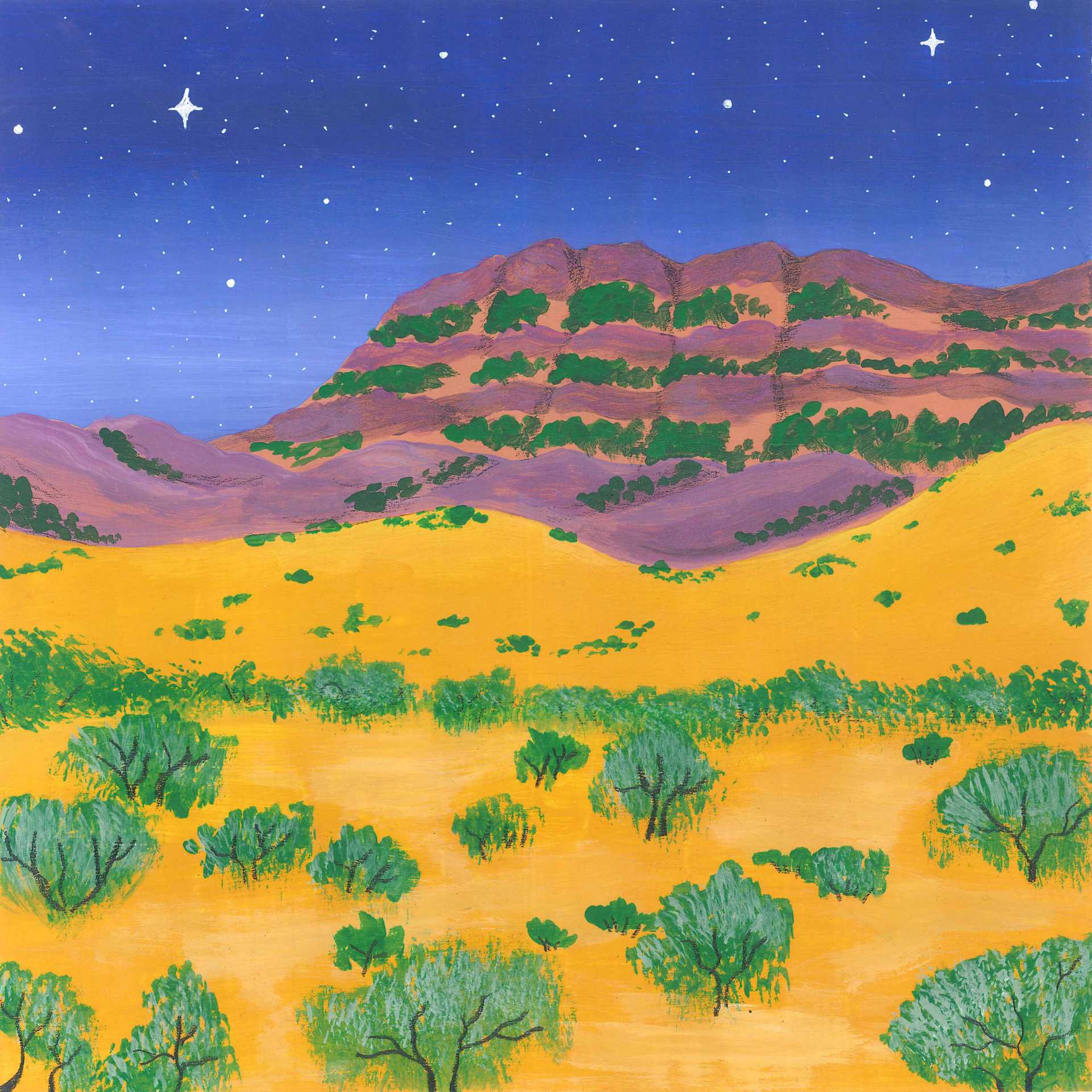
Night at Fifteen Mile Creek in Early Winter
The Flinders Ranges are largely composed of folded and faulted sediments deposited in a large basin during the Neoproterozoic on the passive margin of the ancient continent of Rodinia. During the Cambrian, approximately 540 million years ago, the geosynclinal sequence was folded and faulted into a large mountain range. Since this time the area has undergone erosion, resulting in the relatively low ranges today.
The flora of the Flinders Ranges is composed largely of species adapted to a semi-arid environment such as cypress-pine, mallee, and black oak. Moister areas near Ikara/Wilpena Pound support grevilleas, Guinea flowers, lilies and ferns. Reeds and sedges grow near permanent water sources such as springs and waterholes.
Since the eradication of dingos and the establishment of permanent waterholes by European settlers for their introduced stock, the numbers of red kangaroos, western grey kangaroos and euros in the Flinders Ranges have increased. The yellow-footed rock-wallaby, which neared extinction after the arrival of Europeans due to hunting and predation by foxes, has now stabilized. Other endemic marsupials include dunnarts and planigales. Echidnas are the sole monotreme species in the park. Insectivorous bats make up significant proportion of mammals in the area. Reptiles include goannas, snakes, dragon lizards, skinks and geckos. The streambank froglet is an endemic amphibian.
There are a large number of bird species including various parrots, emus, the wedge-tailed eagles and small numbers of waterbirds. The land within the national park has been identified by BirdLife International as an Important Bird Area (IBA) because it contains an apparently sustainable population of the range-restricted short-tailed grasswren. A wide variety of birds typical of semi-arid mallee regions are abundant here.
